-
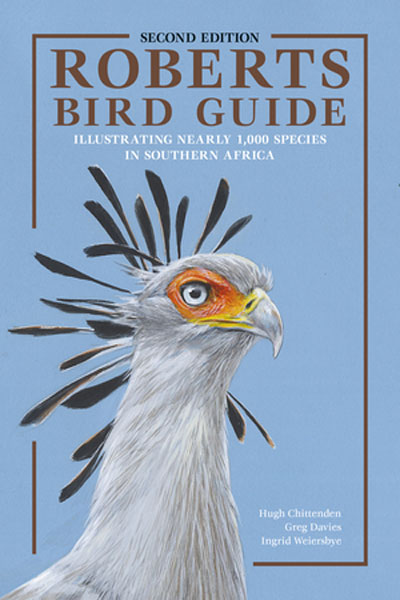 Covering nearly 1,000 species found in southern Africa (south of the Cunene and Zambezi rivers), this 570-page revised edition of Roberts Bird Guide features stunning new artwork detailing seasonal, age and sexual differences in approximately 240 annotated colour plates ...
Covering nearly 1,000 species found in southern Africa (south of the Cunene and Zambezi rivers), this 570-page revised edition of Roberts Bird Guide features stunning new artwork detailing seasonal, age and sexual differences in approximately 240 annotated colour plates ... -
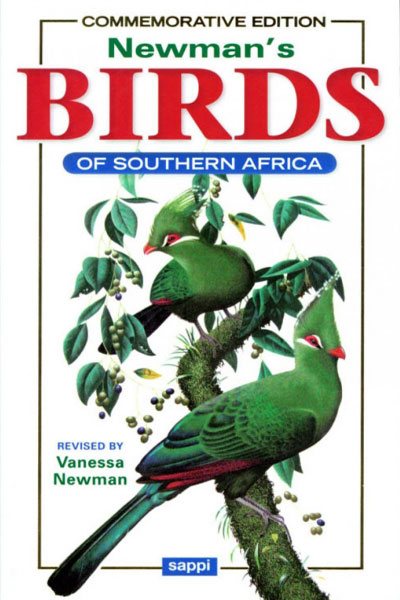 This commemorative tenth edition celebrates the contribution of the late author, Kenneth Newman, fully revised and updated by his daughter, Vanessa Newman, to reflect the latest research, taxonomy, and common names. Newman's Birds of Southern Africa, a leading field guide in the region, illustrates and fully describes all the birds recorded from the Antarctic to the Zambezi River.
This commemorative tenth edition celebrates the contribution of the late author, Kenneth Newman, fully revised and updated by his daughter, Vanessa Newman, to reflect the latest research, taxonomy, and common names. Newman's Birds of Southern Africa, a leading field guide in the region, illustrates and fully describes all the birds recorded from the Antarctic to the Zambezi River. -
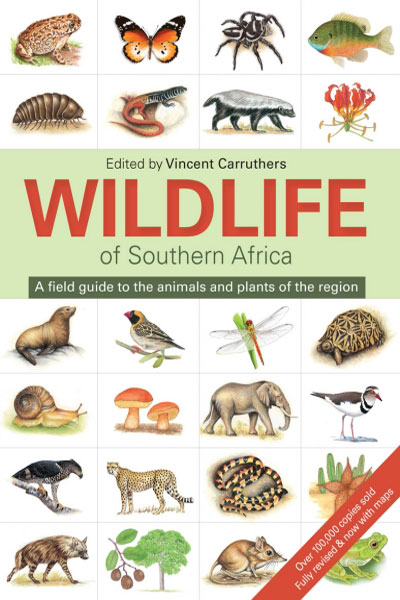 A field guide to the wildlife of southern Africa, describing over 2,000 plants and animals, with accurate illustrations in full colour. This book has been a trusted field companion for many years. Comprehensively updated, it now features range maps for most groups. The chapters are colour-coded for easy reference, and diagnostic features appear in bold type within the descriptions. Each chapter is written by a leading expert in the field. All the main plant and animal groups are covered: Lower invertebrates; Spiders and other arachnids; Insects; Freshwater fishes; Frogs; Reptiles; Birds; Mammals; Grasses, sedges, ferns, and fungi; Wildflowers; Trees.
A field guide to the wildlife of southern Africa, describing over 2,000 plants and animals, with accurate illustrations in full colour. This book has been a trusted field companion for many years. Comprehensively updated, it now features range maps for most groups. The chapters are colour-coded for easy reference, and diagnostic features appear in bold type within the descriptions. Each chapter is written by a leading expert in the field. All the main plant and animal groups are covered: Lower invertebrates; Spiders and other arachnids; Insects; Freshwater fishes; Frogs; Reptiles; Birds; Mammals; Grasses, sedges, ferns, and fungi; Wildflowers; Trees. -
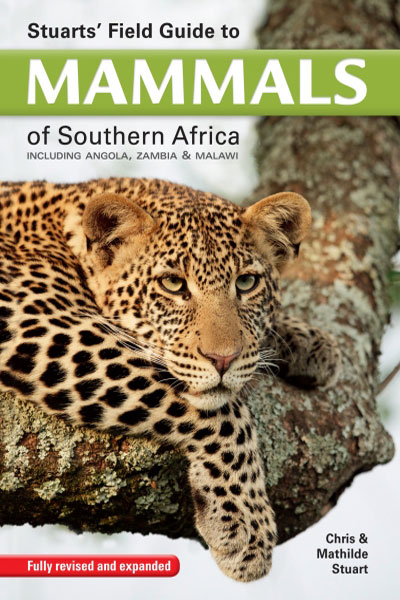 Greater southern Africa has a wealth of mammal species, almost 400 – all of which are covered in this fully updated, comprehensive field guide. Now expanded to include species found in Angola, Zambia, and Malawi, it has also been extensively revised to include: the most recent research and taxonomy, revised distribution maps and many new images.
Greater southern Africa has a wealth of mammal species, almost 400 – all of which are covered in this fully updated, comprehensive field guide. Now expanded to include species found in Angola, Zambia, and Malawi, it has also been extensively revised to include: the most recent research and taxonomy, revised distribution maps and many new images. -
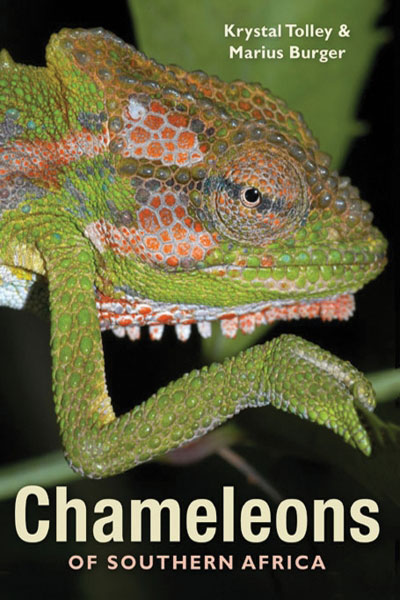 Chameleons are fascinating creatures: they almost always evoke in people a strong response, be it delight, wonder, or fear. Chameleons of Southern Africa explores this interesting group of lizards and discusses their strange and unusual, sometimes unnerving, characteristics. It presents an overview of all types of chameleons (of which there are up to 160 species in total, worldwide), their history, geographic distribution (restricted mainly to Madagascar and Africa), reproduction, behaviour and their relationships to each other.
Chameleons are fascinating creatures: they almost always evoke in people a strong response, be it delight, wonder, or fear. Chameleons of Southern Africa explores this interesting group of lizards and discusses their strange and unusual, sometimes unnerving, characteristics. It presents an overview of all types of chameleons (of which there are up to 160 species in total, worldwide), their history, geographic distribution (restricted mainly to Madagascar and Africa), reproduction, behaviour and their relationships to each other. -
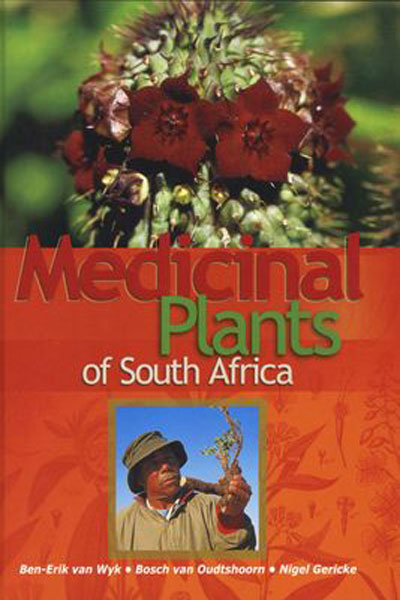 A photographic guide to the most used and best-known South African plant medicines, including their botany, main traditional uses and active ingredients. detailed species descriptions of more than 150 medicinal plants and their close relatives, or other species used in a similar way. Each entry includes the following information: a description of the plant, the plant parts used, medicinal uses, preparation and dosage, active ingredients, and pharmacological effects.
A photographic guide to the most used and best-known South African plant medicines, including their botany, main traditional uses and active ingredients. detailed species descriptions of more than 150 medicinal plants and their close relatives, or other species used in a similar way. Each entry includes the following information: a description of the plant, the plant parts used, medicinal uses, preparation and dosage, active ingredients, and pharmacological effects. -
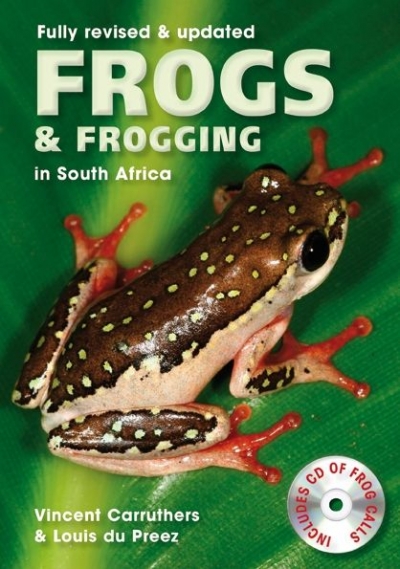 Frogs & Frogging in South Africa offers amateur froggers an accessible and practical introduction to frog identification. This edition of the highly popular guide has been expertly revised and fully updated to reflect the latest advances in taxonomy and nomenclature.
Frogs & Frogging in South Africa offers amateur froggers an accessible and practical introduction to frog identification. This edition of the highly popular guide has been expertly revised and fully updated to reflect the latest advances in taxonomy and nomenclature. -
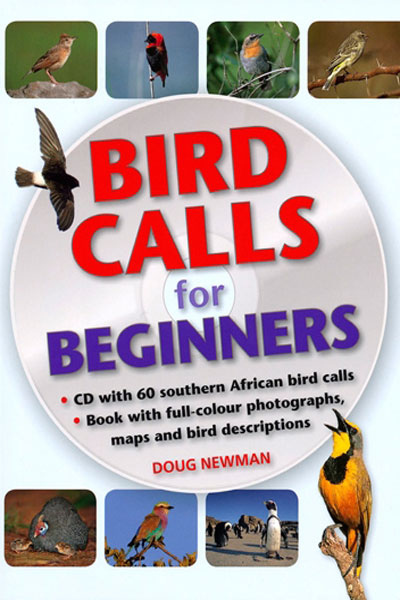 Bird Calls for Beginners, by Doug Newman features 60 common southern African bird calls; the book shows colour photographs of these birds, distribution maps and interesting text about their habits, feeding and nesting routines, and describes their calls.
Bird Calls for Beginners, by Doug Newman features 60 common southern African bird calls; the book shows colour photographs of these birds, distribution maps and interesting text about their habits, feeding and nesting routines, and describes their calls. -
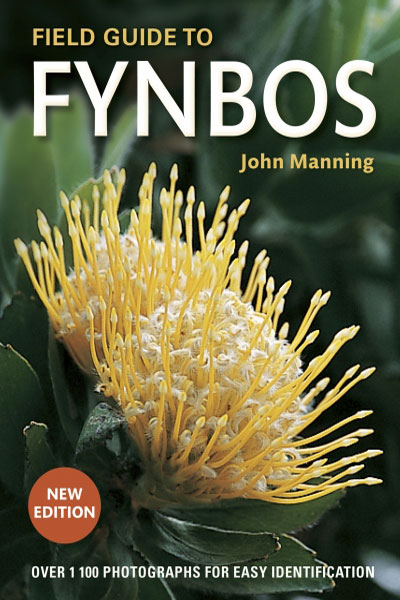 Field Guide to Fynbos features over 1,000 species from the Cape Floristic Region – home to one of the world’s richest floras. This fully updated edition focuses on the most common and ‘showy’ plants. An introduction unpacks the world of fynbos – including origins, diversity, climate, and adaptations and is followed by a photographic key and descriptions of the fynbos families. Species descriptions are accompanied by photographs, distribution maps, comparisons with similar species, and notes on traditional uses.
Field Guide to Fynbos features over 1,000 species from the Cape Floristic Region – home to one of the world’s richest floras. This fully updated edition focuses on the most common and ‘showy’ plants. An introduction unpacks the world of fynbos – including origins, diversity, climate, and adaptations and is followed by a photographic key and descriptions of the fynbos families. Species descriptions are accompanied by photographs, distribution maps, comparisons with similar species, and notes on traditional uses. -
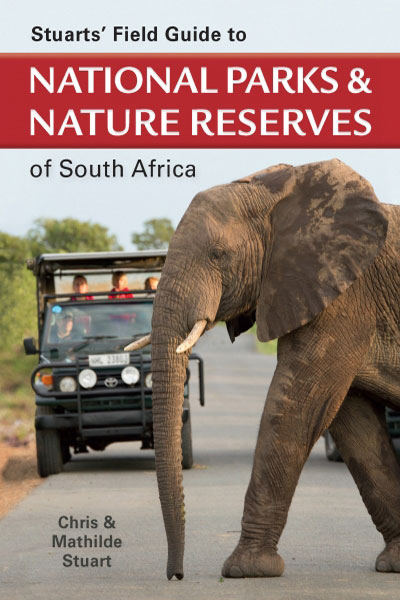 This book is a unique and indispensable guide to the hidden treasures of 43 of South Africa's best and most accessible national parks, nature reserves and wilderness areas. Included are more than 900 photographs, 140 detailed park, locator, provincial and vegetation maps, and a 31-page photographic guide that aids identification of wildlife and vegetation. Organised by province, the conservation areas are comprehensively described, covering history, location, landscape, geology, vegetation, and wildlife.
This book is a unique and indispensable guide to the hidden treasures of 43 of South Africa's best and most accessible national parks, nature reserves and wilderness areas. Included are more than 900 photographs, 140 detailed park, locator, provincial and vegetation maps, and a 31-page photographic guide that aids identification of wildlife and vegetation. Organised by province, the conservation areas are comprehensively described, covering history, location, landscape, geology, vegetation, and wildlife. -
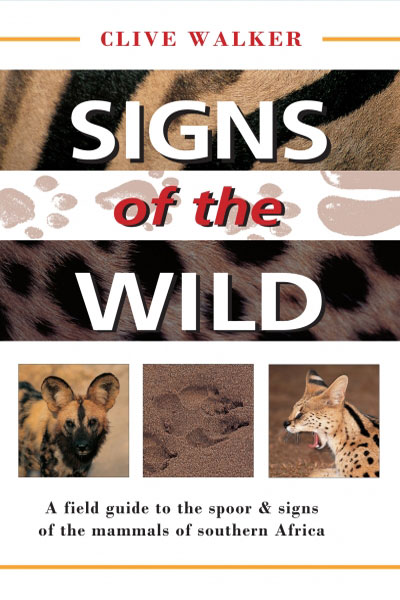 This compact field guide to the identification of Southern African mammals based on their spoor, droppings and skulls has been accepted as the standard work on the subject. This edition offers up-to-date information on identification through signs. This edition provides new illustrations for several species. It also features illustrations of skulls for all the carnivores.
This compact field guide to the identification of Southern African mammals based on their spoor, droppings and skulls has been accepted as the standard work on the subject. This edition offers up-to-date information on identification through signs. This edition provides new illustrations for several species. It also features illustrations of skulls for all the carnivores. -
 Professor Terence McCarthy with 'How on Earth? opens the door to normally unimaginable processes, changes and incidences of Earth history. Perhaps the most important attributes that set humans apart from other animals are our ability to reason, to articulate our thoughts and to convey them to others.
Professor Terence McCarthy with 'How on Earth? opens the door to normally unimaginable processes, changes and incidences of Earth history. Perhaps the most important attributes that set humans apart from other animals are our ability to reason, to articulate our thoughts and to convey them to others. -
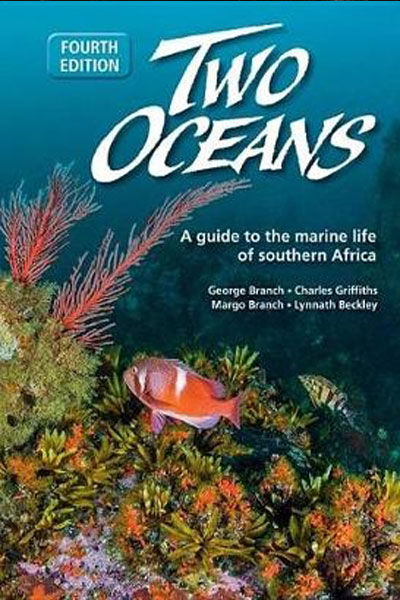 For over two decades Two Oceans has been the pre-eminent book to which scientists, students, divers, and beachcombers turn to identify and learn about marine life, from sponges to whales and seaweeds to dune forests. In this exuberantly colourful, fully revised fourth edition, over 2 000 species are now covered, names and other details have been updated to reflect the latest taxonomy and many new photographs have been added.
For over two decades Two Oceans has been the pre-eminent book to which scientists, students, divers, and beachcombers turn to identify and learn about marine life, from sponges to whales and seaweeds to dune forests. In this exuberantly colourful, fully revised fourth edition, over 2 000 species are now covered, names and other details have been updated to reflect the latest taxonomy and many new photographs have been added. -

-
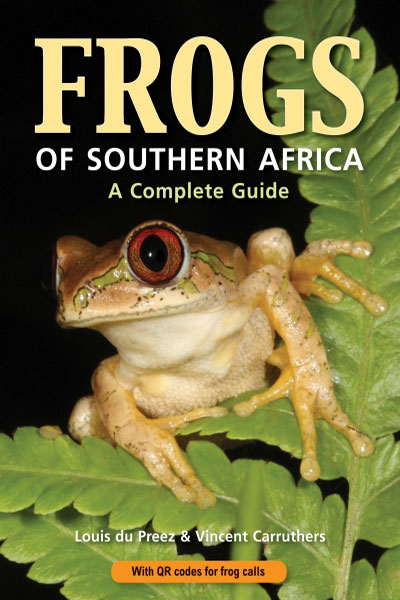 This new edition (with a slight name change) has been thoroughly updated to reflect taxonomic changes based on the most recent research and DNA studies and includes 12 new species and more than 130 new images. All 169 southern African frog species, and their tadpole stages, are fully described, along with their conservation status, calls, habitat, and habits.
This new edition (with a slight name change) has been thoroughly updated to reflect taxonomic changes based on the most recent research and DNA studies and includes 12 new species and more than 130 new images. All 169 southern African frog species, and their tadpole stages, are fully described, along with their conservation status, calls, habitat, and habits. -
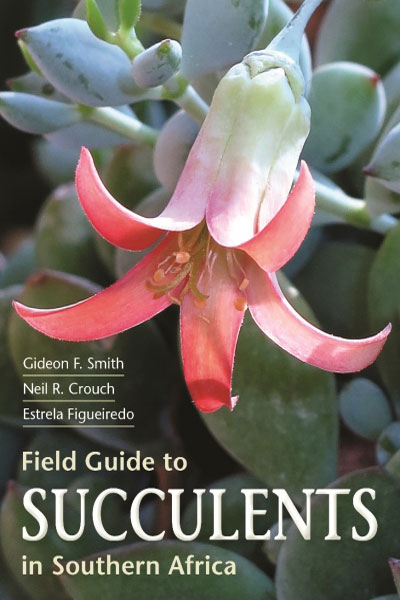 This user-friendly, richly illustrated field guide features more than 700 southern African succulents, focusing on the most interesting and commonly encountered species. An introduction to families and their key features will help readers identify the relevant plant group, while concise accounts describing the plants’ diagnostic features, along with distribution maps, will enable quick ID of species.
This user-friendly, richly illustrated field guide features more than 700 southern African succulents, focusing on the most interesting and commonly encountered species. An introduction to families and their key features will help readers identify the relevant plant group, while concise accounts describing the plants’ diagnostic features, along with distribution maps, will enable quick ID of species. -
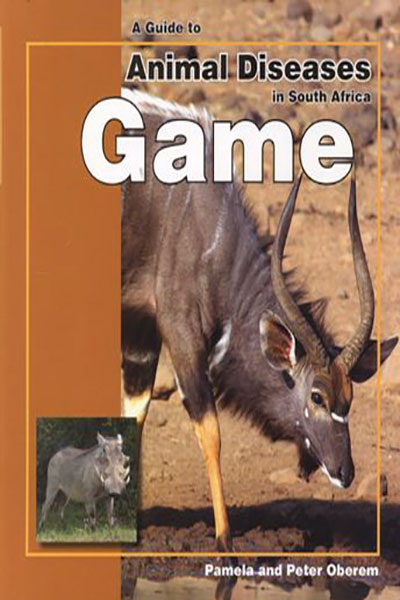 This is the first comprehensive guide to wildlife diseases to be published in South Africa specifically for game farm owners, game rangers and others involved in the management and handling of wildlife. It contains 190 photographs, illustrations, maps, and parasite life cycles.
This is the first comprehensive guide to wildlife diseases to be published in South Africa specifically for game farm owners, game rangers and others involved in the management and handling of wildlife. It contains 190 photographs, illustrations, maps, and parasite life cycles. -
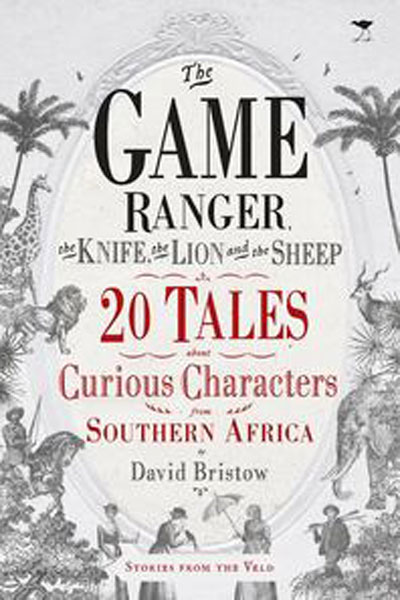 The Game Ranger, the Knife, the Lion, and the Sheep offers spell-binding stories of some amazing, little known characters from South Africa, past and very past. Let us introduce you to some of the characters you will meet inside. Starting with Krotoa, the Khoi maiden who is found working in the Van Riebeeck household as both servant and interpreter.
The Game Ranger, the Knife, the Lion, and the Sheep offers spell-binding stories of some amazing, little known characters from South Africa, past and very past. Let us introduce you to some of the characters you will meet inside. Starting with Krotoa, the Khoi maiden who is found working in the Van Riebeeck household as both servant and interpreter. -
 World-renowned wildlife trackers Alex van den Heever and Renias Mhlongo have spent more than two decades working together, tracking leopards and lions at Londolozi, jaguars in South America and grizzly bears in the United States. In Changing a Leopard's Spots, Alex shares stories from his life with Renias, including the successes, failures, dramas, laughter, disappointments, and highlights.
World-renowned wildlife trackers Alex van den Heever and Renias Mhlongo have spent more than two decades working together, tracking leopards and lions at Londolozi, jaguars in South America and grizzly bears in the United States. In Changing a Leopard's Spots, Alex shares stories from his life with Renias, including the successes, failures, dramas, laughter, disappointments, and highlights. -
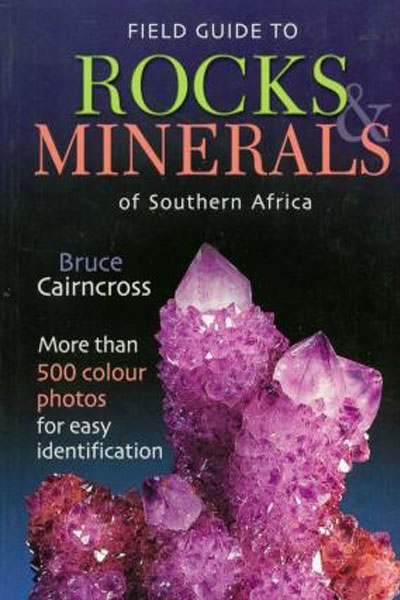 Southern Africa boasts many spectacular examples of rocks and minerals; volcanic lava make up the dramatic Drakensberg mountain range, granite mountains form stunning scenery in Namibia and Zimbabwe, and some of the most ancient rocks on Earth - over 3000 million years old - are to be found on the subcontinent. The region is home to many important and interesting minerals, as well as a wide array of beautiful gemstones - diamonds from South Africa.
Southern Africa boasts many spectacular examples of rocks and minerals; volcanic lava make up the dramatic Drakensberg mountain range, granite mountains form stunning scenery in Namibia and Zimbabwe, and some of the most ancient rocks on Earth - over 3000 million years old - are to be found on the subcontinent. The region is home to many important and interesting minerals, as well as a wide array of beautiful gemstones - diamonds from South Africa. -
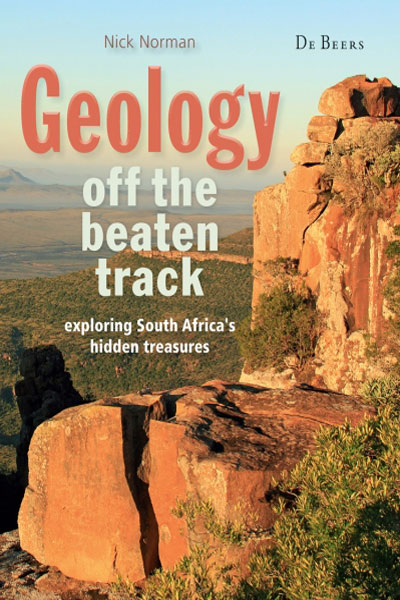 Geology off the beaten track follows on the success of author Nick Norman’s earlier Geological Journeys (co-authored with Gavin Whitfield), which has sold more than 20 000 copies in the last 6 years. This new book helps readers understand and interpret the geology along SA’s regional and other less-travelled roads. It features 13 detailed routes across the country, taking in geologically interesting areas such as the Richtersveld, Cape winelands and the Valley of Desolation near Graaff-Reinet. The text is richly illustrated with photos and explanatory diagrams, making it suitable for armchair travellers too. Maps for all the routes indicate key geosites, with GPS readings to pinpoint their location.
Geology off the beaten track follows on the success of author Nick Norman’s earlier Geological Journeys (co-authored with Gavin Whitfield), which has sold more than 20 000 copies in the last 6 years. This new book helps readers understand and interpret the geology along SA’s regional and other less-travelled roads. It features 13 detailed routes across the country, taking in geologically interesting areas such as the Richtersveld, Cape winelands and the Valley of Desolation near Graaff-Reinet. The text is richly illustrated with photos and explanatory diagrams, making it suitable for armchair travellers too. Maps for all the routes indicate key geosites, with GPS readings to pinpoint their location. -
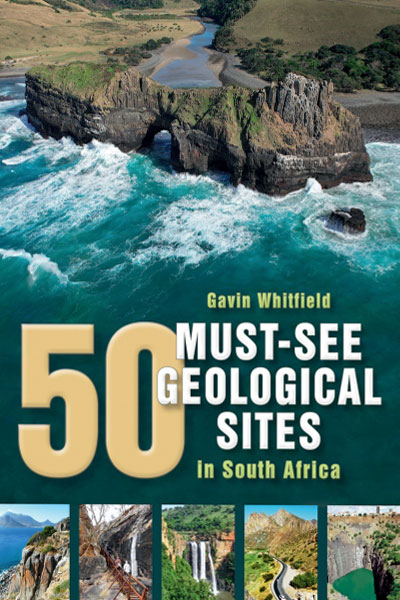 The book presents 50 of the most recognizable and geologically interesting sites around South Africa, including some of palaeontological or historical renown and some of mining interest. The diverse selection includes sites such as Chapman’s Peak, Howick Falls, Walter Sisulu National Botanical Gardens, Mapungubwe, Tswaing Meteorite Crater and the Fraserburg Fossil Surface.
The book presents 50 of the most recognizable and geologically interesting sites around South Africa, including some of palaeontological or historical renown and some of mining interest. The diverse selection includes sites such as Chapman’s Peak, Howick Falls, Walter Sisulu National Botanical Gardens, Mapungubwe, Tswaing Meteorite Crater and the Fraserburg Fossil Surface. -
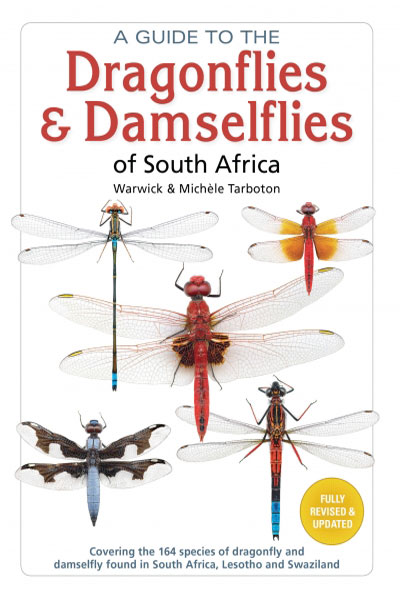 In this fully revised edition of A Guide to the Dragonflies & Damselflies of South Africa, all 164 species known to occur in South Africa, Lesotho and Swaziland are described and illustrated, grouped according to family (six dragonfly and six damselfly families). The species entries feature scans of live insects (close-up and side-view images) and photographs of specimens in their natural environment and showing key behaviours.
In this fully revised edition of A Guide to the Dragonflies & Damselflies of South Africa, all 164 species known to occur in South Africa, Lesotho and Swaziland are described and illustrated, grouped according to family (six dragonfly and six damselfly families). The species entries feature scans of live insects (close-up and side-view images) and photographs of specimens in their natural environment and showing key behaviours. -
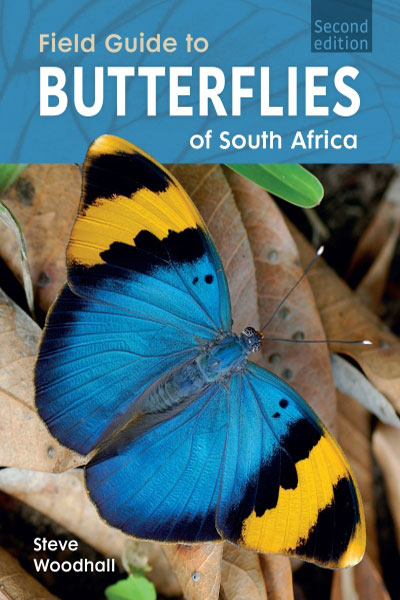 Field Guide to Butterflies of South Africa is designed for easy, rapid identification of all butterflies likely to be seen in South Africa. Following a worldwide trend to butterfly watching, readers are encouraged to observe behaviour rather than collect specimens. A detailed introductory section discusses butterfly biology, behaviour and anatomy, and butterfly families and subfamilies.
Field Guide to Butterflies of South Africa is designed for easy, rapid identification of all butterflies likely to be seen in South Africa. Following a worldwide trend to butterfly watching, readers are encouraged to observe behaviour rather than collect specimens. A detailed introductory section discusses butterfly biology, behaviour and anatomy, and butterfly families and subfamilies. -
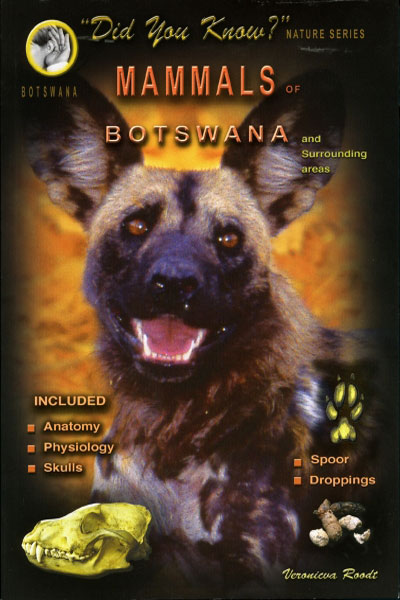 This guide to the mammals of Botswana offers a detailed roundup of more than 80 animals – with maps, travel information and a photographic field guide in a single, handy volume. It covers the six major mammal groups: non-ruminants, ruminants, carnivores, non-carnivorous small mammals, rodents and shrews, and bats – in colour-coded sections for quick reference, and with animal names in seven languages.
This guide to the mammals of Botswana offers a detailed roundup of more than 80 animals – with maps, travel information and a photographic field guide in a single, handy volume. It covers the six major mammal groups: non-ruminants, ruminants, carnivores, non-carnivorous small mammals, rodents and shrews, and bats – in colour-coded sections for quick reference, and with animal names in seven languages. -
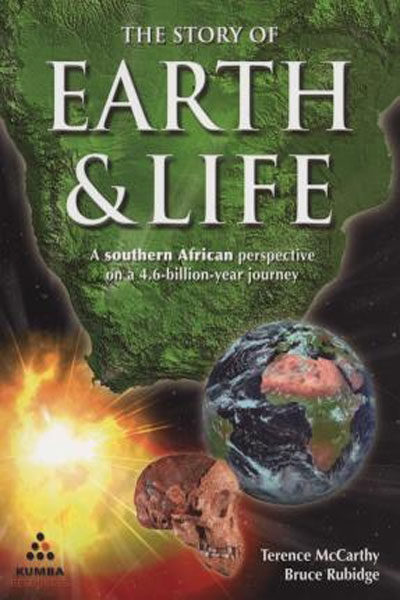 Southern Africa is without equal in terms of geology, a treasure trove of valuable minerals with a geological history dating back some 3 600 million years. In addition, the evolution of plants and animals, especially mammals and dinosaurs, is well preserved in the region, which also has among the best records of the origin of modern man.
Southern Africa is without equal in terms of geology, a treasure trove of valuable minerals with a geological history dating back some 3 600 million years. In addition, the evolution of plants and animals, especially mammals and dinosaurs, is well preserved in the region, which also has among the best records of the origin of modern man. -
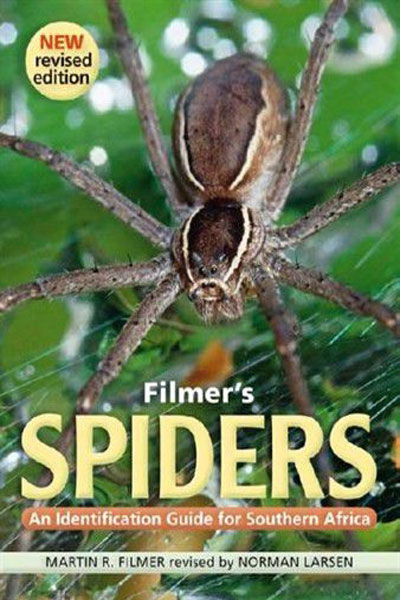 Fully revised and updated, Filmer’s spiders: an identification guide to Southern Africa features all 63 families of spider that occur in this region. A fresh layout, full-colour photographs throughout – many of them new – and diagrams of diagnostic features make this a quick and easy guide for use in the field. The spiders are grouped into web-living, ground-living, and plant-living species to aid identification.
Fully revised and updated, Filmer’s spiders: an identification guide to Southern Africa features all 63 families of spider that occur in this region. A fresh layout, full-colour photographs throughout – many of them new – and diagrams of diagnostic features make this a quick and easy guide for use in the field. The spiders are grouped into web-living, ground-living, and plant-living species to aid identification. -
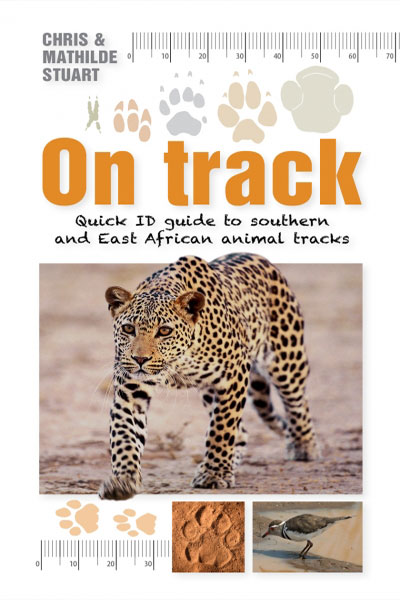 Following the success of the earlier Scatalog – Quick ID guide to southern African animal droppings, here’s another quick and quirky identification guide, this time to tracks of the region’s most commonly found mammals, but also includes tracks of reptiles, rodents, birds and insects. A simple key on the inside front cover directs users to any of 11 categories, such as ‘cloven hooves’, ‘paws’ or 'tramline-like trails. Nearly 100 animals or closely related groups of animals are depicted: for each, there’s a silhouette of front and back feet and a colour photograph of the track the average measurements for each track a short description of the track information about the circumstances and likely habitat Concise and to-the-point, this pocket-sized reference
Following the success of the earlier Scatalog – Quick ID guide to southern African animal droppings, here’s another quick and quirky identification guide, this time to tracks of the region’s most commonly found mammals, but also includes tracks of reptiles, rodents, birds and insects. A simple key on the inside front cover directs users to any of 11 categories, such as ‘cloven hooves’, ‘paws’ or 'tramline-like trails. Nearly 100 animals or closely related groups of animals are depicted: for each, there’s a silhouette of front and back feet and a colour photograph of the track the average measurements for each track a short description of the track information about the circumstances and likely habitat Concise and to-the-point, this pocket-sized reference -
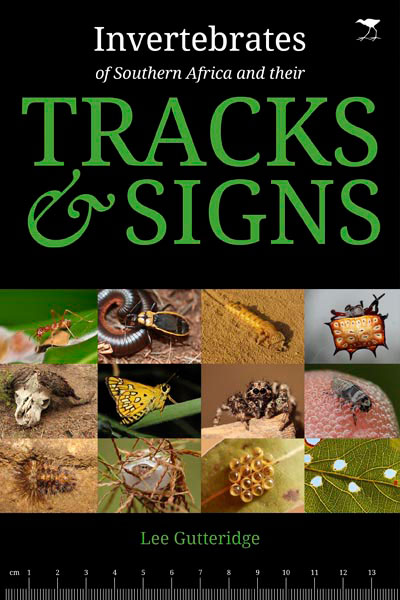 This book intensively covers a never-before-explored aspect of Southern African nature and is an essential new addition to the library of every nature lover. It was researched and written over the last four and a half years to open a door to a little-known micro-world that exists all around us. Invertebrates – which include commonly seen creatures such as butterflies, spiders, beetles, worms, and scorpions – are everywhere. The signs of their day-to-day activities are all around us if we know where to look. The life cycles and behaviours of many animals are discussed, with a special focus on interactions between mammals and invertebrates – a fascinating subject.
This book intensively covers a never-before-explored aspect of Southern African nature and is an essential new addition to the library of every nature lover. It was researched and written over the last four and a half years to open a door to a little-known micro-world that exists all around us. Invertebrates – which include commonly seen creatures such as butterflies, spiders, beetles, worms, and scorpions – are everywhere. The signs of their day-to-day activities are all around us if we know where to look. The life cycles and behaviours of many animals are discussed, with a special focus on interactions between mammals and invertebrates – a fascinating subject. -
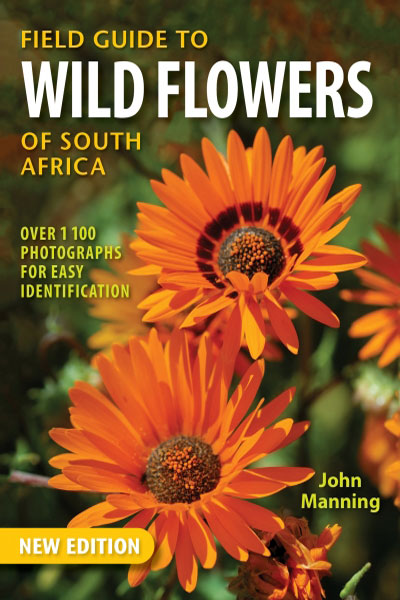 This fully updated edition of Field Guide to Wildflowers of South Africa covers more than 1,100 species of ore, focusing on the most common, conspicuous, and showy plants around the region. An informative introduction discusses plant diversity, vegetation types, and includes a key to identifying plant groups. The species descriptions follow, and each is accompanied by: a vivid photograph; a distribution map showing range, and an indication of the plant.
This fully updated edition of Field Guide to Wildflowers of South Africa covers more than 1,100 species of ore, focusing on the most common, conspicuous, and showy plants around the region. An informative introduction discusses plant diversity, vegetation types, and includes a key to identifying plant groups. The species descriptions follow, and each is accompanied by: a vivid photograph; a distribution map showing range, and an indication of the plant.
